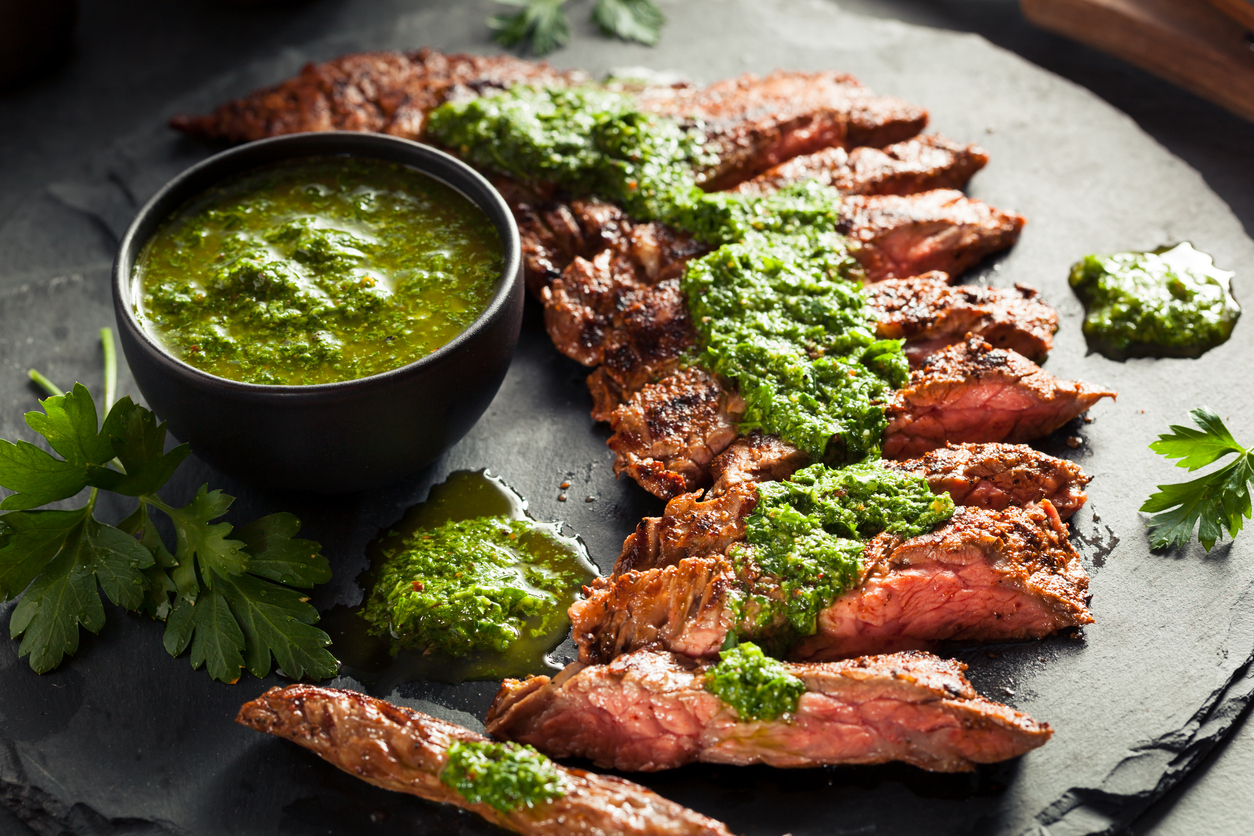The Origins of Chimichurri in Argentine Cuisine
Some mysteries may never be solved.
Who built Stonehenge?
Is there a real Loch Ness Monster?
What happened to Amelia Earhart?
Let’s add another one to the list: where did the term “chimichurri” come from? The origin of this Argentine grilling staple’s name is as murky as the sauce itself.
Writing in the San Francisco Chronicle a few years ago, Joyce Goldstein tried to solve the riddle of how chimichurri got its name:
According to one account, “chimichurri” is a corruption of English names such as “Jimmy Curry” or “Jimmy McCurry,” who was either an Irish or Englishman who signed up to fight for Argentine independence, or an meat wholesaler, depending on who you ask.
Another explanation comes from the Argentine gourmet Miguel Brasco, who postulates that the term came from British soldiers who were captured during the failed Rio de la Plata invasions in the early 1800s. These soldiers mixed English, Spanish and aboriginal words when asking for condiments.
Other stories give credit to Basque settlers who came to Argentina in the 19th In this telling, the settlers referred to the sauce as “tximitxurri,” which – loosely translated – means “a mixture of several things in no particular order.”
“There are as many variations of chimichurri sauce as there are stories of where the sauce came from,” author and chef Elizabeth Karmel wrote in a 2011 Associated Press piece.
“My favorite story credits English-speaking colonists for speaking in ‘Spanglish’ and asking for sauce with their meals, which they called curry. Instead of saying ‘Che mi salsa,’ they would say ‘Che mi curry.’ And supposedly that somehow got changed around to chimichurri.”
Chimichurri in Argentine Grilling
While we can’t prove how chimichurri got its name, we can poke holes in some of the myths surrounding this sauce, with the help of Asado Argentina, a website devoted to Argentine grilling.
Chimichurri doesn’t need to be a fresh, bright green. It comes in different colors, and some fans like it to have an aged appearance for a more mellow flavor. For example, our Che Amigo Chimichurri Sauce is a lovely orange color.
Chimichurri isn’t Argentina’s answer to ketchup. (Ketchup is the Argentinian version of ketchup.) It’s not served with every meal, and you won’t see it poured over French fries or hot dogs. Nor is it a South American pesto. They may look similar, but they contain different ingredients and have different uses.
Some people argue that Chimichurri should serve as a condiment, not a marinade. In the Argentine grilling world, it is typically served with steaks, sausages and organ meat.
Chimichurri isn’t made simply by mixing cilantro, limes and spices in a blender.
If you’re interested in delving into the world of Argentine grilling, Gaucho Grills can help. Our grills can let you grill steaks and other meats as if you’re at a traditional Argentinian parilla.
And fear not: we sell chimichurri to help add some extra flavor to your meal, even if you don’t really know how the sauce you’re serving got its name.

